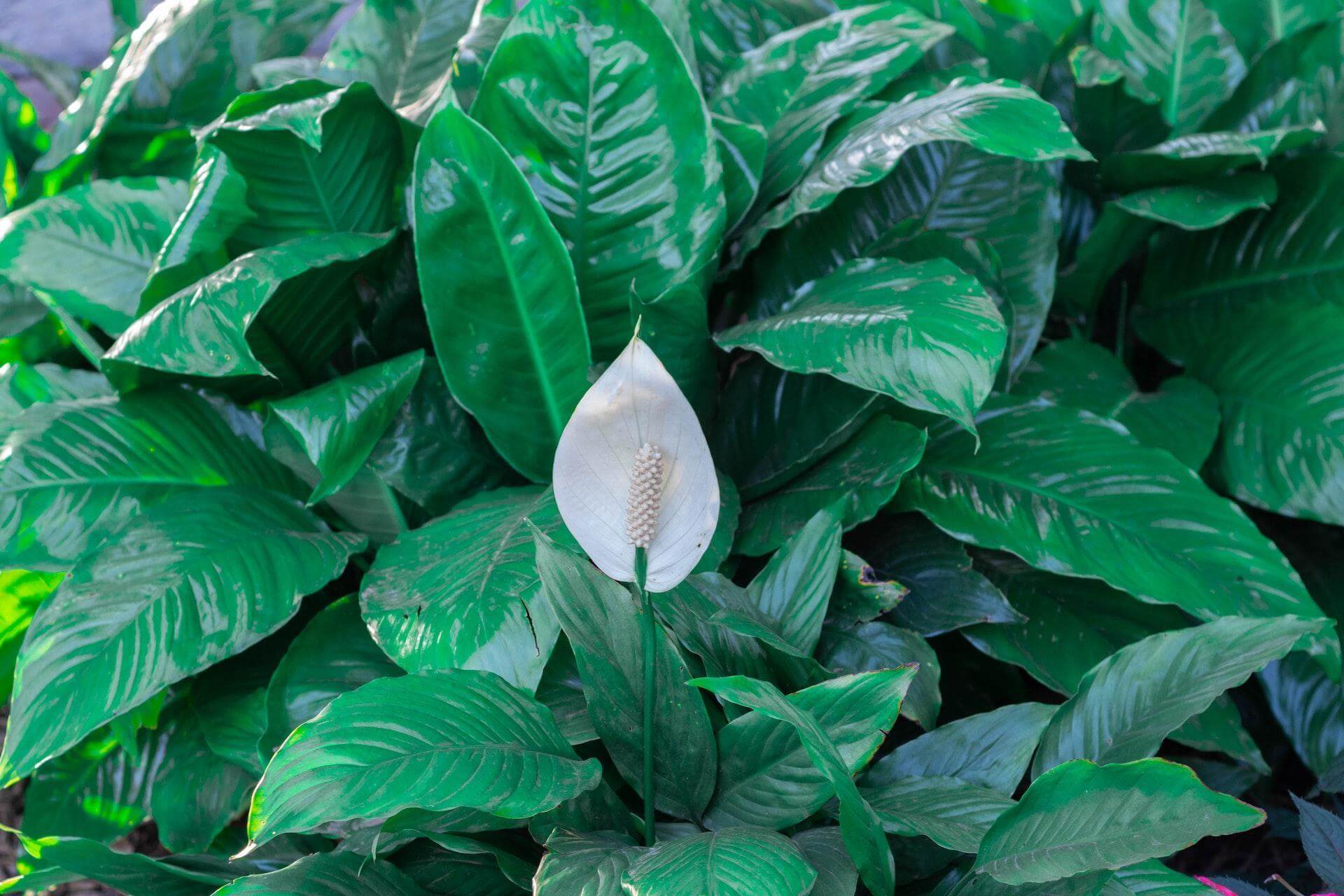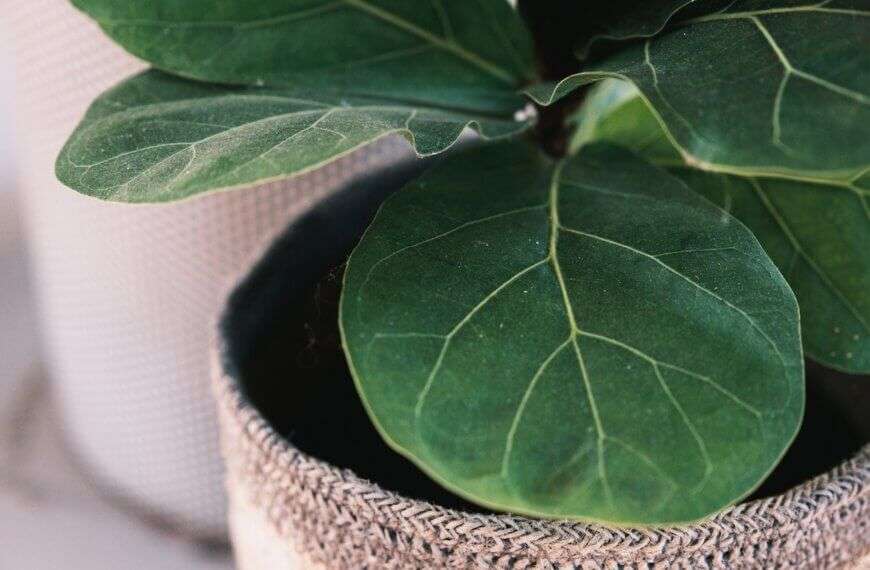Introduction to Peace Lily
Peace lily, botanically known as Spathiphyllum, is a popular indoor plant. Its lush green beauty with beautiful white flowers makes it the perfect addition to any space. It enjoys low to medium light and even soil moisture. Plus, its air-purifying qualities make it a healthy choice for households.
For proper care, you must ensure the right amount of water and sunlight. Too much or too little can cause root rot, yellow leaves, or wilting. Water only when the top 2 inches of soil feel dry. Avoid direct sunlight as it can scorch or discolor the leaves. A humid environment between 65-80°F will keep it thriving.
Peace lilies have been traditionally used to symbolize hope, innocence, purity, and rebirth. Not only are they gorgeous, but they have various benefits for wellbeing.
Getting to know and how to care for a peace lily is like getting to know your ex – you must understand their needs if you want them to stick around.
Understanding the Needs to Care for a Peace Lily
To understand the needs of your peace lily and ensure its proper growth, you need to care for it meticulously. Light requirements, temperature and humidity levels, watering needs, soil type and fertilization all play a crucial role in the overall health of your plant. In this section, we will take a closer look at each of these sub-sections so that you can give your peace lily the care it needs.
Light Requirements
Ascertaining the Adequate Illumination for a Peace Lily
Light is essential to care for a peace lily plants. Here are 6 points to note:
- Bright, filtered, indirect light is best.
- Direct sunlight can hurt leaves.
- Optimal exposure is 4-6 hours daily.
- Lower than 12°C may stunt growth.
- Consistent light keeps plants healthy.
- Adjustments to light can direct growth.
Additionally, avoid cold drafts.
NASA research found peace lilies can improve air quality and break down toxins.
Peace lilies need climate-controlled conditions to thrive.
Temperature and Humidity
Maintaining the Peace Lily’s Ambient Conditions.
Peace Lilies need a suitable environment to thrive and bloom. Knowing the ideal temperature and humidity is key for creating the best conditions.
Temperature and Humidity:
Peace Lilies should be grown indoors with a temperature range of 18-24°C. The ideal humidity should be between 40-60%.
| Temperature Range | Ideal Growth Condition |
| Below 15°C | Growth rate slows. |
| 15°C – 18°C | Growth slows. |
| 18°C – 24°C | Ideal growth range. |
| Above 27°C | May cause wilting. |
Unique Details:
Protect the plant from drafts! Rapid changes in temperature may cause the Peace Lily to drop leaves. Keep it away from windows and doors that can cause cold air drafts.
Suggestions:
Here are some suggestions to help maintain the ideal environment. Water the soil evenly, without overwatering. Use pebble trays to add water. Consider using humidifiers to keep the humidity consistent near the plant.
Water you waiting for? The Peace Lily needs a drink!
Watering Needs
The Hydration Needs to Care for a Peace Lily
Adequate water is a must for sustaining the health of your peace lily. Check the soil moisture, as dry soil can damage the leaves and overwatering may cause root rot. Water when the top inch of soil feels dry to touch.
Distilled water or rainwater at room temperature is best for your peace lily. Tap water, due to its high mineral content and chlorine, can lead to fertilizer buildup and harm the delicate root system.
Appropriate drainage is essential for keeping the soil fresh and to avoid overwatering. A container with drainage holes and emptying out excess water from the saucer after irrigation will help.
Peace lily’s water needs differ in different seasons; more water in summer than winter. The optimal time for watering is early morning or late evening.
To keep the foliage healthy, mist them routinely. This technique can also maintain humidity levels during dry periods or in arid surroundings.
In conclusion, hydration is key for your peace lily’s health and vibrancy. With these tips, you can support its lush growth and longevity for years! Even the most high maintenance plant can’t resist some dirt and fertilization, like a diva at a spa day and makeover.
Soil Type and Fertilization
Soil and Nutrients are crucial to care for a Peace Lily’s health. The soil must be well-draining, with adequate organic matter to hold moisture. It needs to provide Nitrogen, Phosphorus, and Potassium.
See the table for Soil Type and Fertilization details:
| Soil Type | Fertilization Requirements |
|---|---|
| Loamy Soil | 20-20-20 N-P-K Balanced Fertilizer |
| Sandy Soil | High Nitrogen Content Fertilizer |
| Clay Soil | Liquid Organic Fertilizers |
Peace Lilies require soil with pH from 5.0 – 6.5. Otherwise, nitrogen deficiency can occur, resulting in stunted growth and small leaves.
Fertilize monthly during growing season (March to September) with a balanced 20-20-20 N-P-K fertilizer.
A friend of mine once neglected her Peace Lily for three weeks. The leaves turned yellow and wilted. After watering, all petals dropped off! She followed the advice of the local Nursery and pruned it fully, but ended up waiting for six months for new leaves to regrow.
“Raising a child? That’s nothing compared to the care for a Peace Lily.”

Tips to Care for a Peace Lily
To care for a peace lily, you need to follow some essential tips which include pruning and cleaning, repotting, pest control, and propagation techniques. Each of these tips has a unique purpose to ensure your Peace Lily plant thrives, so let’s explore each one to help you keep your plant healthy and flourishing.
Pruning and Cleaning
Keep your Peace Lily looking fresh and vibrant with regular pruning and maintenance. Gently pull off dead or yellow leaves from their base, and trim any brown edges on the leaves with clean, sharp scissors. Use a damp cloth or sponge to clean off dust and dirt buildup. For larger plants, mix mild soap and water and wipe the leaves to prevent pests. Make sure the plant gets adequate airflow to avoid the growth of mold.
These maintenance tasks are important for preventing diseases and keeping your plant healthy and strong. Neglecting them might result in a limp, sickly-looking plant that struggles to grow. So, give your Peace Lily a spa day by repotting it in fresh soil every so often!
Repotting
Peace Lilies need love and attention! A key part of looking after them is repotting. This means moving them to a bigger pot with new soil. To get it right, follow these five steps:
- Choose a larger container with drainage holes at the bottom.
- Carefully take the plant out and check for any issues with the roots. Remove any dead or damaged ones.
- Put a layer of soil in the new pot. Place the plant in it and fill in around it with more soil.
- Water it and put it in indirect sunlight.
- Wait 2 weeks before fertilizing.
Peace Lilies can get root rot, so make sure there’s good drainage and don’t overwater. Repotting once a year when the plant grows too big will keep it healthy. Get it right and your Peace Lily will thrive!
Pest Control
Organic creatures may disturb the well-being of your Peace Lily plant. Combatting pests helps it grow and last long. To help, try these:
- Neem oil, soap and/or rubbing alcohol on the foliage to fight spider mites, aphids and other sap-sucking insects.
- Wipe off mealybugs and thrips with a cotton swab or spray water on leaves.
- Uphold the right humidity, don’t overwater and keep your Peace Lily clean to stop pests from landing.
Pro Tip: Watch out for browning, strange growth patterns and stunted growth as this could mean infestations! Get your Peaces of mind back with these propagation techniques for your Peace Lily.
Propagation Techniques
Propagating peace lilies can be done with various techniques. Here are some tips to help your plant collection grow!
Division is when you separate the plant into two or more sections by pulling apart the root ball. Each section should have enough roots. Cutting propagation involves taking a cutting with leaves, buds and nodes.
Success depends on the environment, time of year and water quality. Warmer temps are ideal for propagating in spring and summer. But if you live in a warmer region, it can happen all year with slight adjustments.
Peace lilies have been propagated via division and cutting for many generations. It’s important to learn the right approaches to care. Have patience – it takes experience to get it just right!
Troubleshooting Common Problems with Peace Lily
To troubleshoot common problems with your peace lily, this section with the title “Troubleshooting Common Problems with Peace Lily” with sub-sections “Leaf Browning and Yellowing,” “Wilting or Drooping Leaves,” and “Root Rot and Fungal Infections” is the solution. Each sub-section will cover a different issue you may be facing with your peace lily and provide tips to remedy the problem.
Leaf Browning and Yellowing
The leaves of your Peace Lily may turn brown and yellow – a common issue for plant owners. Over-watering, under-watering, direct sunlight or too much artificial light can cause this.
Check the soil moisture level. Stick your finger 1-2 inches deep in the soil. If it feels dry, water it with room temperature water. But, if it’s moist, wait a few more days. Keep the plant in a bright, indirect location.
If the leaf browning continues, add fertilizers to the soil monthly during spring and summer. Repotting every two years can also help restore essential nutrients.
Regular maintenance will make sure your Peace Lily stays beautiful. Wipe down the dusty leaves and trim dying ones promptly. Now your plant will thrive!
Wilting or Drooping Leaves
When your Peace Lily looks droopy, several things could be to blame. Check the soil moisture and adjust if necessary. Don’t over-water though, as this could lead to root rot. Also, make sure your plant isn’t in direct sunlight and the temperature is between 65-85°F.
You may need to repot with fresh soil, prune damaged leaves or roots, and mist the leaves. Pests or diseases could also be the cause. If you think this is the issue, isolate your plant and get help from a professional.
My friend’s Peace Lily was wilting, but the solution was quite simple. Too much indirect sunlight from her window blinds was the problem. After relocating it, the plant bloomed again. But if root rot or fungus is the issue, don’t forget the plant antifungal cream!

Root Rot and Fungal Infections
Peace Lilies can be a beautiful addition to any décor, and they don’t need much attention or watering. However, they are prone to root and fungal infections if overwatered. To prevent this, check the soil daily for moisture and water only when needed. If the plant already has root rot, remove the damaged roots and replant in fresh soil.
In order to keep the plant healthy, practice good hygiene like cleaning tools before use and sterilizing containers before planting. Also, keep pets away from the plants.
Sometimes, even with the best care, fungal infections can still occur. If this happens, consult professionals as some plants may not be able to recover from dying shoots or foliage.
To make sure your Peace Lily is healthy and beautiful, give it love and care!
Conclusion: Maintaining a Healthy and Beautiful Peace Lily
Keep your Peace Lily healthy and looking its best! Ensure it gets sunlight, but not direct. Water regularly and don’t overdo it – too much water can cause root rot. Keep the soil moist and use a diluted houseplant fertilizer in spring and summer.
Prune off any yellow or damaged leaves and repot with fresh soil every two years. Look out for pests like spider mites and mealybugs, and treat them quickly. Wipe down the leaves with a damp cloth to clear away dust. Then, show off your lovely plant in a place where everyone can admire it.
Follow these steps and your Peace Lily will live long and look beautiful!
Frequently Asked Questions
Q: How often should I water my peace lily?
A: Peace lilies can be sensitive to overwatering, so it is important to let the soil dry out slightly between waterings. Typically, water your peace lily once a week, but adjust based on the humidity and light levels in your home.
Q: Should I fertilize my peace lily?
A: Yes, fertilizing your peace lily can promote healthy growth and better blooms. Use a balanced, water-soluble fertilizer once a month during the growing season (spring and summer) and reduce to every two months during the dormant season (fall and winter).
Q: How much light does a peace lily need?
A: Peace lilies thrive in bright indirect light, but they can also tolerate lower light levels. Be sure to keep your peace lily out of direct sunlight, as this can scorch the foliage.
Q: Do peace lilies need to be pruned?
A: Pruning can help promote bushier growth and remove dead or damaged leaves. Use clean, sharp scissors to trim back any yellow or brown leaves and cut back any overly long stems.
Q: What temperature and humidity levels are best for peace lilies?
A: Peace lilies prefer temperatures between 60-85°F and humidity levels between 40-60%. They can survive in lower or higher conditions, but may not thrive as well. Place your peace lily in a room with consistent temperature and humidity levels.
Q: Can peace lilies be toxic to pets?
A: Yes, peace lilies can be toxic to pets, especially cats and dogs. The sap from the leaves and stem can cause oral irritation, vomiting, and difficulty swallowing. Keep peace lilies out of reach of pets and children.




